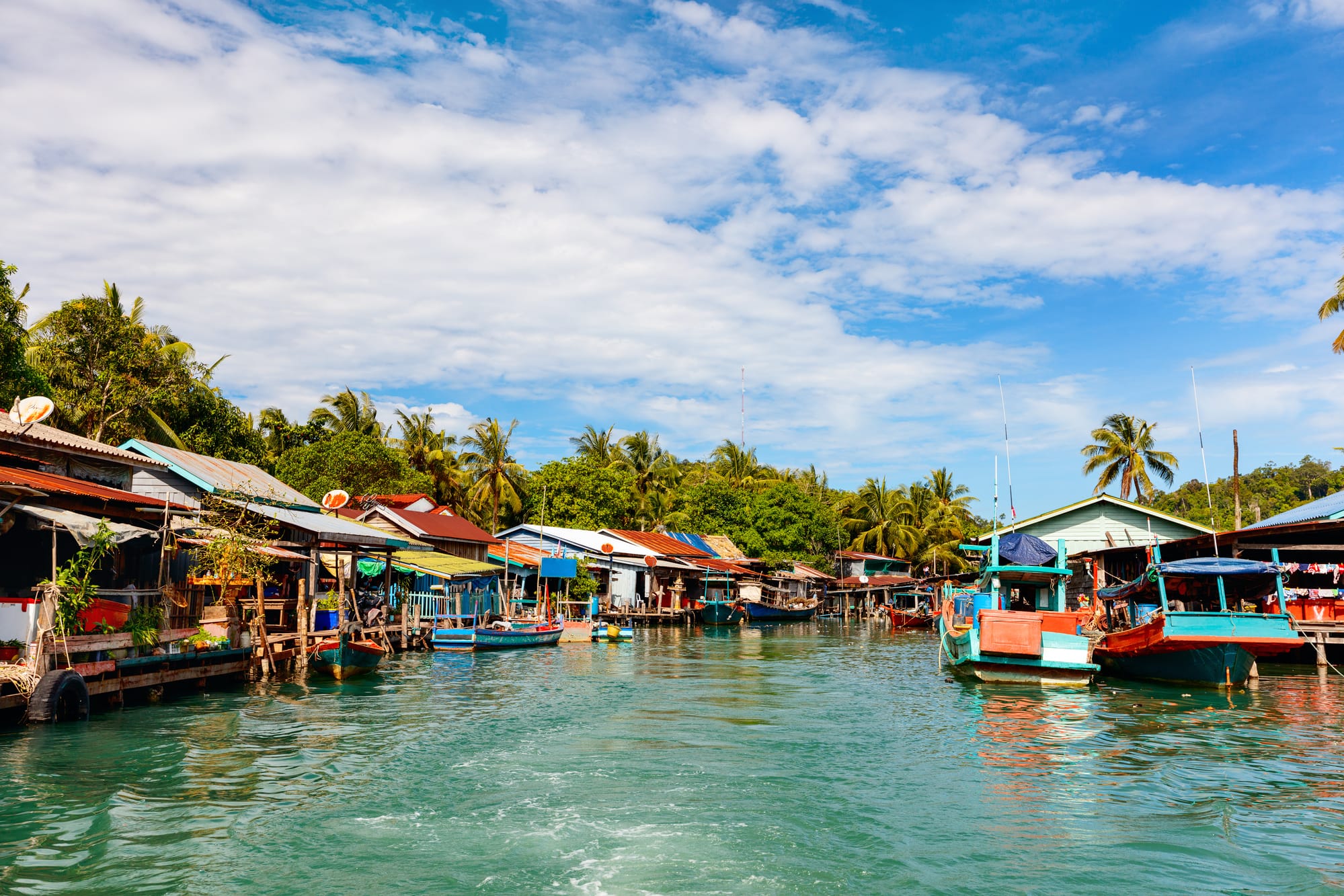We will start our journey in Peru on the Lake Titicaca. Near the city of Puno is an artificial archipelago with nearly 80 islands. The Uros people built these islands and have lived on them for centuries, allegedly to avoid war with the Incas. The islands, the houses, and the boats are all made from ►
We will start our journey in Peru on the Lake Titicaca. Near the city of Puno is an artificial archipelago with nearly 80 islands. The Uros people built these islands and have lived on them for centuries, allegedly to avoid war with the Incas. The islands, the houses, and the boats are all made from totora reeds. Travelers can discover the traditional way of life through tours organized by the locals and even spend the night in one of the lodges on the lake.
Let’s jump to West Africa and head to the south of Ghana, near the Atlantic Ocean. On Amansuri Lake, you will discover Nzulezo, also called the Village on Stilts. The locals are primarily farmers and fishermen and will happily share their unique 400-year-old history. The traditional way of life is adapted to the lake and shows a dynamic relationship between individuals and nature. This small and isolated village houses a primary school and businesses. There are also homestays to accommodate guests who wish to stay overnight. Nzulezo is part of the Amansuri Wetland, one of Ghana’s most beautiful nature preserves and the largest inland swamp forest.
As we continue our journey, we will stop in Asia, home to many floating villages. The largest and oldest village is located in Bandar Seri, the capital of Brunei. Kampung Ayer has been the principal settlement of the country throughout its history: it was the capital of the Bruneian Empire for a few centuries, and there has been documentation of its existence as early as the 16th century. Today, over 30,000 people live in traditional wooden houses built on stilts above the Brunei River.
Our next stop is Tonle Sap Lake in Cambodia. The largest freshwater lake in Southeast Asia is a Unesco Biosphere Reserve and is home to several floating villages, including Chong Kneas and Kampong Phluk. The lake expands fivefold for six months each year during the monsoon season, flooding crops and forests. About 1 million people live on the lake in floating villages and stilt cities, and during the dry season, water levels recede, revealing streets and fields. The Water Celebration celebrates a thousand-year-old way of life, where the locals honor Naga, the Seven-Headed Snake, during a boat race gathering thousands of people.
We will head to Myanmar for our next discovery. There are many floating villages on the lnle Lake. Locals grow vegetables and fruit in gardens floating on the surface, created by gathering weeds from the lake bottom and anchoring them with bamboo poles. These floating beds rise and fall with the water level and are resistant to flooding. Travelers can take a boat tour to see the villages and learn about the traditional crafts and practices of the region, such as silversmithing, silk weaving, and the fabrication of a unique fabric: lotus silk, made from lotus fiber. You can find many restaurants and hotels on the lake, and even a monastery and a pagoda.
The stunning Ha Long Bay in Vietnam is home to the Vung Vieng Village, a fishing community famous for its cultured pearls. Travelers, in search of beautiful natural landscapes, can go by boat to this village located 25 km from the coast. The high green limestone islands, typical of the bay, protect the small village from big waves from the sea. From the Vung Vieng Village, the surrounding islands are easily accessible for a lovely retreat in nature. You can also try your hand at the traditional fishing of the village. ◄
